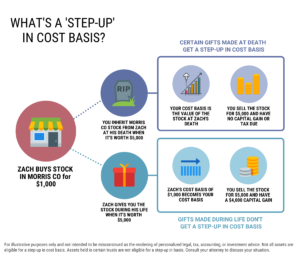Updated for 2023. For most parents, it’s a trifecta: help your kids learn about investing, save for retirement, and get fast-tracked to becoming a millionaire. It’s possible, and surprisingly attainable. Here’s how it works: if a teenage or college-aged kid has earned income (i.e. a part-time job), they are eligible to contribute to an IRA, even if someone else (like a parent or grandparent) is funding the account. A Roth IRA is the perfect tool, as the investment growth and subsequent withdrawals will both be tax-free in retirement.
Can parents contribute to a Roth IRA for their children?
As long as a child has earned income, ideally on a W-2, they are eligible to contribute to an IRA or Roth IRA. Kids do not need to be over 18 to have an IRA (see below for more on that) and contributions can be made by a 3rd party (e.g. a parent or relative). The maximum that can be invested annually in an IRA is the lesser of the child’s earned income or the annual IRS limit for IRA contributions, which is $6,500 for a child or teen in 2023.
 Why should you open a Roth IRA for your kids or grandkids?
Why should you open a Roth IRA for your kids or grandkids?
There are a number of great benefits for families who have the means to help fund a retirement account on behalf of a minor or college student. Although contributions may be relatively small depending on the teen’s earned income, the benefits can be lasting.
A Roth IRA can turbocharge a child’s retirement savings
The financial benefit of funding an IRA for a teenager is a textbook example of compounding in action. Compounded growth allows investors to earn a return on previously incurred investment returns, meaning invested dollars can work harder. Since the benefits of compounded growth increase with longer time horizons, the impact of saving and investing from a young age cannot be overstated.
Here’s an example:
Julian is 16 years old and has a summer job at a local country club. He earns $4,500 in W-2 wages and he and his parents decide to make a $4,000 contribution to a Roth IRA. Julian keeps this job throughout high school and college and although his wages increase, he maintains the same $4,000 annual contribution, 75% of which is now paid by Julian. After college, Julian gets a full-time job but continues making his $4,000 annual contribution (now 100% self-funded) through age 30, when he can no longer contribute to a Roth IRA due to his income.
Assuming a 7% average rate of return, by age 65 (50 years after making the first contribution), Julian’s Roth IRA would be worth nearly $1,150,000 (in today’s dollars)…all of which he’d be able to withdraw 100% tax-free! To further illustrate the power of compounding, if Julian contributed $60,000 as a lump sum at age 30 instead of equal amounts over the 15 years prior, by age 65 his account would be worth only $685,000 in today’s dollars. Though neither would be enough to solely fund retirement in 50 years, when paired with an ongoing investment strategy and regular 401(k) contributions, it just might make the difference when exploring an earlier retirement.
Help teach kids valuable life lessons about saving, investing, and personal finance
By opening a retirement account for a child or young adult, parents can begin to teach their children about the importance of saving and investing a portion of their income. Opening a Roth IRA can be the perfect opportunity to discuss the basics of investing, including the benefits of compounding. Even if you plan to fund the account on the child’s behalf, consider having the teen contribute even a small portion of their paycheck too. This can help children feel connected to the process and a greater sense of ownership in funding their retirement.
Unique Roth IRA benefits and limitations
There are several benefits and limitations that apply to Roth IRAs which are unique to this type of investment account. Fortunately, the majority of the downsides won’t have any impact on kids and teens:
- Funding after-tax; growth tax-free: Unlike the other types of tax-deferred retirement accounts (like a traditional IRA or 401(k)), contributions to a Roth account are made with after-tax dollars. One of the benefits of using a Roth account is that the investment gains will not be taxed annually and withdrawals in retirement can be made tax-free, assuming at least 5 years have passed since the first Roth contribution was made.
- Long-term tax-free legacy planning: Another benefit is that there are no required minimum distributions (RMDs) on Roth IRAs, meaning the account can grow indefinitely and your child will never be forced to take distributions, unlike all other types of retirement accounts. This type of tax diversification can help reduce taxable income in retirement. It can also be used to leave a tax-free inheritance to potential future grandchildren, though under the Secure Act, beneficiaries who inherit a retirement account from a parent or relative can no longer ‘stretch’ the distributions over their lifetime by taking required minimum distributions (RMDs). Instead, starting in 2020, they will be forced to take the funds in 10 years.
- Income limits: Although the income limitations won’t impact a young investor for years to come, the primary disadvantage of Roth accounts is that income limitations preclude many affluent individuals from making annual contributions, though there are no income restrictions on Roth conversions. The ability for someone to contribute to a Roth IRA is totally phased out when MAGI exceeds $153,000 (single) or $228,000 (married filing jointly) in 2023.
- Cap on contributions: One of the disadvantage of IRAs is the relatively low annual contribution limit: $6,500 in 2023 for workers under age 50. Remember, regardless of age, the annual funding limit on a Roth or traditional IRA is the lesser of the individual’s earned income or the stated IRS limit. (One notable exception is a spousal IRA, which is another topic entirely).
Why open a Roth IRA for teens instead of a traditional IRA?
While avoiding RMDs is a factor, the main benefit of using a Roth IRA instead of a traditional IRA for kids has to do with projected tax savings. If your dependent child or teen must file a tax return, their tax rate will typically be very low, even 0%. This is a huge bonus for Roth IRA participants, as those dollars will not be taxed again. However, if a traditional IRA was utilized instead, the income tax deduction may have little or no impact, and the funds will be fully taxable as ordinary income in retirement.
Note that a child’s earned income cannot be added to their parents’ tax return. Therefore, a parent cannot reduce their own taxable income by funding a traditional IRA for their child. So from the parents’ perspective, additions to a child’s account will be made on an after-tax basis in either scenario.
How to set up a Roth IRA for your kids
If your child is under 18, you will likely need to establish a custodial Roth IRA, which is permitted by many of the large institutions. In any year where the teen has earned income, they are eligible to make a contribution to their Roth IRA for the year in which the wages were earned. At most institutions, opening an account is easy and can be done online. The funds could come from a parent, relative, grandparent, or the child themselves. Through a low-cost, diversified investment strategy, the account could enjoy tax-free compounded growth for decades to come.
A word on earned income
Recall that the deciding factor as to whether funds can be contributed to an IRA is earned income. Proving earned income as an adult is easy, but for teens and young adults, it’s not uncommon to be paid outside of a payroll system depending on the type of employment. Babysitting and lawn care can be lucrative summer jobs, but unless the teen keeps sufficient records, it may not be advisable to contribute to an IRA if their earned income could be called into question. Consult your CPA or tax advisor to discuss what documentation should be maintained for non-W-2 wages.
Parents should also keep in mind that from the IRS’ perspective, earned income must actually be earned; allowance or cash gifts do not qualify. For entrepreneurial parents and business owners, hiring your child to help out with the business could be a win-win, as the wages should be deductible expenses for the business. There are various caveats here as well, which should be discussed with your tax advisor or CPA.
For example, a child must be hired to perform duties that are ordinary and necessary for the business and compensation must be aligned with market rate for the services they render. Essentially, it isn’t kosher to pay a teen $100/hour to run personal errands, but $10/hour for scanning and filing support would likely pass the test.
At Darrow Wealth Management, we believe building wealth is a family affair. To learn more about working with a fee-only financial advisor and full-time fiduciary, schedule a consultation with one of our CFP® professionals.


 Why should you open a Roth IRA for your kids or grandkids?
Why should you open a Roth IRA for your kids or grandkids?







